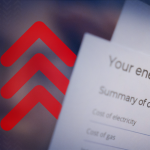A boost in household spending power has been revealed as basic wage growth in July outstripped the rate of inflation for the first time in more than 18 months, according to official figures.
The latest employment data from the Office for National Statistics (ONS) showed that wages, excluding the effects of bonuses, were up 7.8% compared to the same month a year ago.
While that figure, a 22-year high, was static on the previous month, it was ahead of the consumer price index (CPI) measure of inflation for July which had eased sharply to 6.8%, reflecting a sharp fall in the energy price cap.
It means, on paper at least, that salaries are now outpacing the rate of price growth in the economy but it will not feel that way for millions of families whose budgets have hit breaking point during the energy-driven cost of living crisis to date.
Wider figures suggest growing weakness
The ONS report also showed that the UK’s unemployment rate rose from 4.2% to 4.3%.
It said the increase was largely driven by people unemployed for up to 12 months.
There was a rise too in the economic inactivity rate – up by 0.1 percentage points to 21.1% between May and July.
This increase was dominated by students, the ONS said.
It added that those inactive due to long-term sickness increased to another record high.
ONS director of economic statistics, Darren Morgan, said of the data: “Earnings in cash terms continue to increase, at a record rate outside the pandemic-affected period.
“Coupled with lower inflation, this means people’s real pay is no longer falling.
Please use Chrome browser for a more accessible video player
“Unemployment continues to increase in the latest three months. Correspondingly, employment is down, driven by falls among men and the self-employed.”
He added: “Working days lost to strikes jumped in July, especially in education, with the health sector also still heavily affected. However, the overall number is still below what it was a few months ago.
“Job vacancies have fallen below the million mark for the first time since the summer of 2021, when the reopening of economy created huge demand for workers. However, they still remain significantly above pre-COVID levels.”
The ONS data is closely-watched at the Bank of England as its policymakers prepare to decide whether a further interest rate hike is needed to cool demand in the economy and help bring the rate of inflation down.
It has consistently raised fears that high wage growth fuels inflation because, in theory, people have more money in their pockets to spend.
Financial markets currently expect a quarter point interest rate hike to be announced next Thursday.
That would take the rate to 5.5%. It had stood at 0.1% before the Bank’s rate hike cycle began in December 2021 after inflation had started to shoot up due to the economy reopening following COVID restrictions.






















